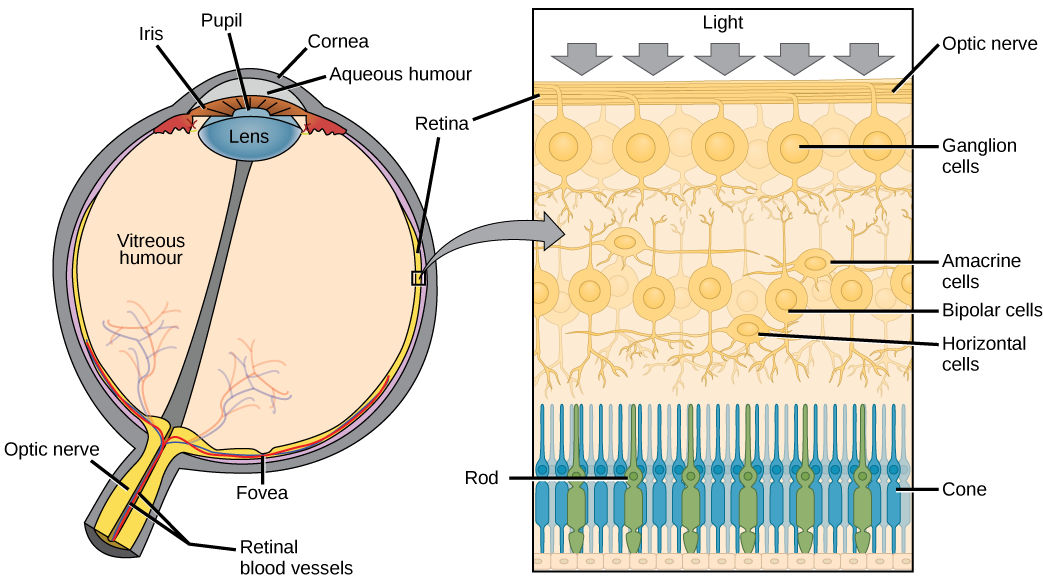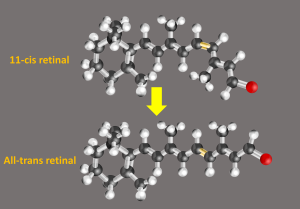Light and Eyeballs
79
Learning Objectives
Be able to describe how light transduction is achieved on a retina.
Know what the role of the pigment epithelium is in the light transduction process.
How do we experience light? When light reaches the back of the eye, it enters the retina. The retina is composed of many layers and contains specialized cells known as photoreceptors. There are two types of photoreceptors: rods and cones. Rods are sensitive to vision in low light and do not sense the color of light, whereas cones are sensitive to brighter light and allow us to perceive color in normal lighting.

Light transduction happens in the outer segments of the rods and cones. This means that light travels through several layers (ganglion cells, bipolar and amacrine cells) before it does anything! Light falling on the retina causes chemical changes to pigment molecules in the photoreceptors, ultimately leading to a change in the activity of the rods and cones. When light (of the right wavelength/color) hits 11-cis retinal, it changes conformation (to all-trans), acting as a switch to start an enzyme cascade in the cell, which eventually changes the rate at which photoreceptors release neurotransmitters.

After absorbing light, all-trans retinal needs to be turned back into 11-cis retinal. So it breaks off its opsin, finds its way to the pigment epithelium, gets bent back into shape, and finds its way back to an opsin. This is why photoreceptor outer segments need to be close to the pigment epithelium, which is the back layer behind the retina where visual pigments are replenished.
OpenStax, Anatomy and Physiology Chapter 14.1 Sensory Perception
Provided by: Rice University.
Access for free at https://openstax.org/books/anatomy-and-physiology/pages/14-1-sensory-perception
License: CC-BY 4.0Cheryl Olman PSY 3031 Detailed Outline
Provided by: University of Minnesota
Download for free at http://vision.psych.umn.edu/users/caolman/courses/PSY3031/
License of original source: CC Attribution 4.0

